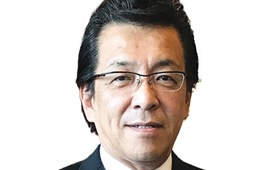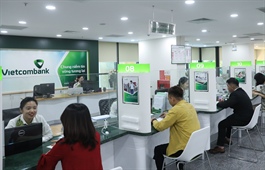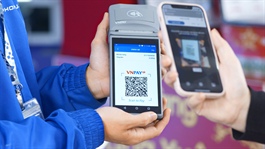Ensuring balance in e-payment market
Ensuring balance in e-payment market
The mobile payment market is not a game for weak businesses without effective strategies. Ngo Trung Linh, CEO of VietUnion – a pioneer in tapping Vietnam’s mobile payment market with the Payoo platform – explained to VIR’s Hoang Oanh why there is still untapped potential for development.
What advantages and disadvantages has the pandemic created for businesses providing electronic payment solutions, from online to offline?

Ngo Trung Linh, CEO of VietUnion
|
The pandemic and its various restricted healthcare requirements have impacted businesses’ traditional activities and forced them to change from a mainly offline to online platform.
We can clearly see that the rapid growth of such businesses with strong online platforms while those who still manage offline business with physical stores have suffered many more challenges and damages from COVID-19. On the positive side, it has sped up digital transformation in firms, forcing them to move faster and faster in adopting online tools.
Viet Union with the Payoo Omni payment solution is a unit that supports both online and offline business groups. Payoo helps online businesses to accept various payment methods such as QR codes, e-wallets, e-vouchers, and interest-free instalment payments in order to acquire and expand more customer segments.
For offline businesses, we help them transform to electronic methods to reduce cash use, which carries more risks of the virus spread, or enabling offline businesses to move towards online payments through various means.
E-wallets are constantly offering attractive promotions to attract customers, but in fact, very few report profits after many years of operation. Does the race kill e-wallet platforms with more serious losses?
An attractive market always attracts many businesses. The current e-wallet market is considered to have big potential and has huge room for development.
Every business has its own strategy. Brand promotion and customer acquisition is a common strategy in the early stages to have a large group of loyal customers. The cost of acquiring customers is very high, and it is even more expensive to retain customers. The first stage is always the most intense.
However, in order to survive in the long term, businesses need to ensure a balance between the interests of customers and the interests of service providers. Competition will also encourage market development, bringing more advanced technology solutions. Like any other business field, incompetent and unsuitable units will also be eliminated according to the rules of competition to leave the playing field for businesses with more appropriate and effective solutions and high endorsement from customers.
What suggestions do you have for e-wallets to survive and develop sustainably in the fierce competitive market?
Every business needs to identify its strengths and characteristics. Enterprises should choose a strategy suitable to their internal resources: people, finance, technology, services and capabilities to introduce the right and appropriate customer segments and products for the market.
To serve the payment needs in Vietnam, besides banks, there are more than 40 payment intermediaries and in the future there will be more. You will succeed and survive if you realise your strength and choose the right strategy.
Why did you choose to develop e-bill payments at a time when the field was underdeveloped in Vietnam?
We have been making e-commerce payments since 2009. The market at that time was still very primitive here, and inefficient with the forms of cashiers coming to the house to collect money. Payoo pioneered in building a platform to make bill payment more convenient, especially utility bills such as electricity, water, television, and internet – services that require monthly payments.
From 2011-2012, the company focused on building a platform to support the payment of bills, after being funded by NTT Data, a major company in the field of bill payment in Japan. The company has contributed to changing the payment habits of customers since the service was introduced, thereby helping to increase customers’ awareness of the convenience, simplicity, and efficiency of electronic payments.
In recent years, we have returned to e-commerce with both online and offline payment solutions in all fields from e-commerce trading floor, travel, and healthcare to education, public services, and electronics.

























